Maximize Your Space with Garden Hanging Bags: The Ultimate Solution for Vertical Gardening and Planting
Are you a garden enthusiast looking for a flexible and easy way to grow plants? Look no further than garden hanging bags! These versatile bags allow you to grow a variety of plants both indoors and outdoors, with the added benefit of portability. Available in fabric, plastic, and felt varieties, each type has its own pros and cons. To ensure optimal results, follow our step-by-step guide on how to set up and use garden hanging bags, including tips for selecting the right soil and maintaining proper watering and drainage. And don’t be afraid to get creative! Use garden hanging bags in unconventional ways, such as creating a vertical herb garden or using them as a unique focal point by hanging them from a trellis. The possibilities are endless!
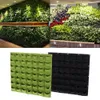

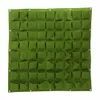
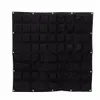
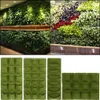
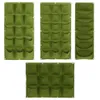
Advantages of Garden Hanging Bags:
One of the most significant advantages of garden hanging bags is their flexibility. They can be moved around easily, allowing you to find the perfect spot for your plants depending on the time of day and season. This means that you can adjust the amount of sunlight your plants receive, which is crucial in ensuring optimal growth. Garden hanging bags also allow you to create more growing space in areas where traditional gardening methods might not be feasible, such as balconies, patios, and decks.
Another benefit of garden hanging bags is their ease of use. They require minimal effort when it comes to preparing the soil and planting your seeds or seedlings. Unlike traditional garden beds, you won’t need to spend hours digging up the soil, removing weeds and rocks, or tilling the ground. Simply fill up the bag with potting soil, add fertilizer, and plant your chosen seeds or seedlings.
Furthermore, garden hanging bags are portable, which makes them ideal for those who like to move their plants around frequently. This feature is especially useful during extreme weather conditions or when you need to protect your plants from pests and diseases. You can easily take your hanging bags indoors or to a safer location, thus giving your plants a better chance of survival.
Apart from their flexibility, ease of use, and portability, garden hanging bags can be used to grow a variety of plants both indoors and outdoors. You can grow anything from herbs, vegetables, and fruits to flowers, succulents, and ferns. The type of plants you choose to grow will depend on several factors such as the amount of sunlight they need, the size of the bag, and the available space.
Types of Garden Hanging Bags:
Fabric Garden Hanging Bags
Fabric garden hanging bags are made from breathable yet durable materials such as canvas, burlap, or polypropylene. These bags are perfect for growing vegetables, herbs, and flowering plants. They are easy to hang, lightweight, and portable. Additionally, they allow for proper drainage and air circulation, preventing the roots from getting waterlogged. Fabric garden hanging bags also have excellent insulation properties, keeping the plants cool in summer and warm in winter.
However, one disadvantage of fabric garden hanging bags is that they tend to dry out quickly due to their porous nature. This means frequent watering is needed, especially during hot weather. Also, pests and insects can easily penetrate through the fabric, causing damage to the plants.
Plastic Garden Hanging Bags
Plastic garden hanging bags are made from sturdy, UV-resistant plastic materials. These bags are inexpensive, long-lasting, and suitable for growing small plants like herbs and flowers. They come in various sizes, shapes, and colors, making them a versatile option for any garden design.
One advantage of plastic garden hanging bags is that they retain moisture well, reducing the need for frequent watering. They are also resistant to pests and insects, providing better protection for the plants. However, plastic bags are not breathable, which means that the roots may become waterlogged if too much water is added. Also, they can easily overheat in direct sunlight, damaging the roots and affecting plant growth.
Felt Garden Hanging Bags
Felt garden hanging bags are made from recycled materials, such as plastic bottles, felt, and wool. These bags are eco-friendly, lightweight, and flexible, making them ideal for growing plants in tight spaces or walls. They have excellent drainage and airflow capabilities, ensuring healthy root development and growth.
One advantage of felt garden hanging bags is that they are durable and long-lasting, with some lasting up to 5 years. They are also soft and breathable, making them suitable for growing delicate plants that require gentle root systems. However, felt bags tend to dry out quickly, requiring frequent watering, especially during hot weather. Also, they may be prone to fungal diseases due to their high moisture retention.
How to Use Garden Hanging Bags:
Step 1: Choosing the Right Garden Hanging Bag
Before you start gardening, it is important to choose the right garden hanging bag. There are different types of bags available in the market, including fabric bags, plastic bags, and felt bags. Each type has its own advantages and disadvantages. For example, fabric bags are ideal for growing vegetables, while felt bags are best suited for growing flowers and herbs. When selecting your bag, keep in mind the size of the bag, the material, and the number of plants you want to grow.
Step 2: Selecting the Right Soil
Once you have chosen your garden hanging bag, it’s time to fill it with soil. It is essential to select the right soil for your garden hanging bag. A good quality potting mix is ideal for growing plants in garden hanging bags. Potting mix is specifically designed to provide the right nutrients and drainage for plants. You should avoid using garden soil as it may contain weed seeds and other harmful organisms. Also, make sure that the soil you choose is suitable for the type of plants you want to grow.
Step 3: Choosing Appropriate Plants
The next step is to choose appropriate plants for your garden hanging bag. The choice of plants will depend on various factors such as the amount of sunlight the area receives, the size of the bag, and the climate. Some popular plants for garden hanging bags include strawberries, tomatoes, herbs, and flowers. When selecting your plants, consider their growth habits and make sure they are suitable for the size of the bag.
Step 4: Maintaining Proper Watering and Drainage
Proper watering and drainage are crucial for the success of your garden hanging bag. Overwatering or poor drainage can lead to root rot and other plant diseases. To avoid this, make sure your garden hanging bag has adequate drainage holes. Also, water your plants regularly but do not overwater them. The frequency of watering will depend on the type of plant and the weather conditions.
Creative Ideas for Garden Hanging Bags:
One creative idea for using garden hanging bags is to create a vertical herb garden. By hanging several bags in a row on a sunny wall or fence, you can grow a variety of herbs such as basil, thyme, and parsley. This not only adds visual interest to the space but also provides easy access to fresh herbs for cooking. Additionally, it can help conserve space in small gardens or balconies, making it a practical and visually appealing option for urban gardeners.
Another unconventional use for garden hanging bags is to hang them from a trellis to create a unique focal point. By filling the bags with trailing plants such as ivy or ferns, you can create a lush and vibrant display that adds depth and dimension to your garden. This is a great way to add visual interest to a bare wall or fence, and can be easily customized to suit your personal style and aesthetic preferences.
In addition to these specific ideas, it’s important to highlight the overall versatility of garden hanging bags. They can be used to create a living wall, add greenery to a balcony or patio, or even as a space-saving solution for growing vegetables in a small yard. The possibilities are endless, and by thinking outside the box, gardeners can create truly unique and inspiring vertical gardens using hanging bags.
Overall, garden hanging bags offer a creative and flexible way to add greenery and interest to any outdoor space. By exploring unconventional uses such as creating a vertical herb garden or using them to create a unique focal point, gardeners can make the most of their vertical space and create visually stunning displays. Whether you have a small balcony or a large garden, garden hanging bags are a versatile and practical option for adding greenery and beauty to your outdoor space. So, don’t be afraid to get creative and think outside the box when planning your own vertical garden with hanging bags.
FAQ
Q1. What are garden hanging bags and how do they work?
Garden hanging bags are a versatile and space-saving solution for vertical gardening. These bags are typically made from durable and breathable materials such as felt or fabric, with pockets or compartments for planting various types of flowers, herbs, and vegetables. The bags are designed to be hung on walls, fences, or railings, allowing you to maximize your gardening space in small or limited areas. They work by providing a vertical planting area that is both functional and visually appealing, making it easy to create a lush garden even in tight spaces.
Q2. What are the benefits of using garden hanging bags for vertical gardening?
There are several advantages to using garden hanging bags for vertical gardening. Firstly, they allow you to make the most of limited space, so you can enjoy gardening even if you have a small balcony, patio, or yard. Additionally, because the bags are elevated, they can help protect your plants from pests and diseases that may affect ground-level gardens. The vertical orientation also promotes better air circulation around the plants, which can contribute to healthier growth. Furthermore, garden hanging bags are portable and can be easily rearranged or moved, giving you flexibility in designing your garden layout.
Q3. How do I maintain and care for plants in garden hanging bags?
Caring for plants in garden hanging bags is relatively straightforward. It’s important to ensure that the bags have proper drainage to prevent waterlogging, especially if they are exposed to rain. Regular watering is essential, as hanging bags may dry out more quickly than traditional planters. Fertilizing and pruning should also be done as needed, depending on the specific plants you are growing. Additionally, periodic inspection for pests and diseases is recommended, as well as providing adequate sunlight for the plants’ needs.
Q4. What types of plants are suitable for growing in garden hanging bags?
A wide variety of plants can thrive in garden hanging bags, including flowers, herbs, vegetables, and even some small fruiting plants. Popular choices for hanging bags include herbs like basil, thyme, and mint; flowering plants such as petunias and pansies; and vegetables like lettuce, strawberries, and cherry tomatoes. When selecting plants for your hanging bags, consider their mature size and growth habits, as well as their sunlight and water requirements. It’s also important to group plants with similar needs together to ensure successful growth in the confined space of the hanging bags.



